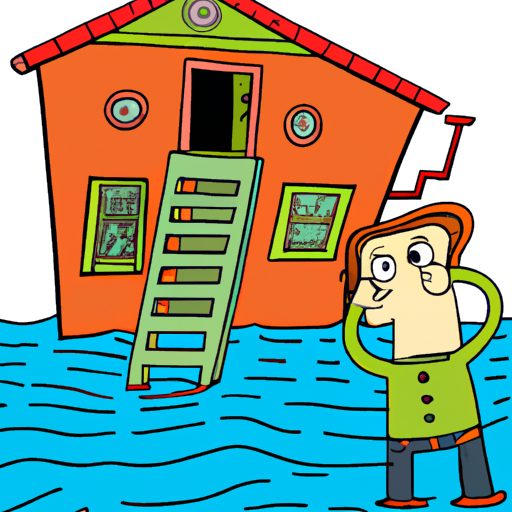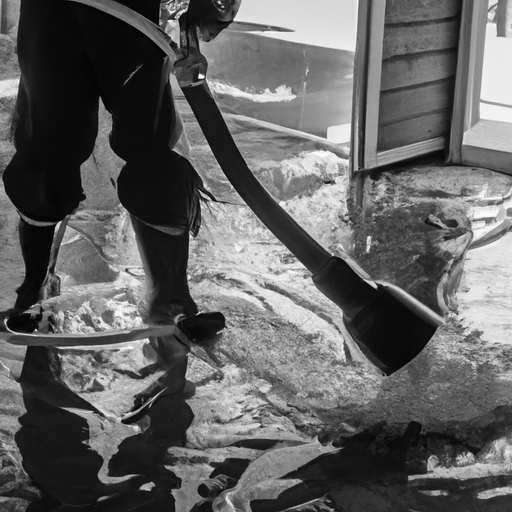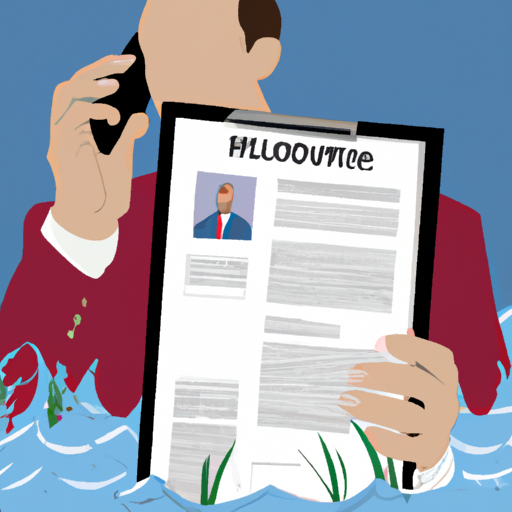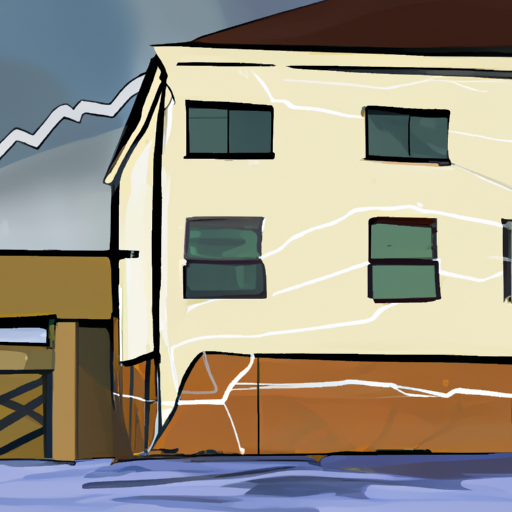TL;DR: This text outlines important steps to take after a flood, including staying safe, documenting the damage, contacting your insurance company, starting the cleanup process, and taking steps to prevent future floods.
Floods can cause significant damage to homes and property, leaving homeowners unsure of where to begin. The road to recovery can seem overwhelming, but with the right knowledge and guidance, you can rebuild your home and regain a sense of normalcy. In this article, we’ll take a look at the necessary steps after a flood, from damage assessment to preventing future flooding. We’ll provide tips and tricks for cleaning and restoring your home, as well as navigating the insurance claims process. By following these guidelines, you can keep yourself safe, protect your property, and start the road to recovery.
- 1. Damage assessment: steps to take after a flood
- 2. Safety measures: ensuring your well-being after a flood
- 3. Cleaning and restoring your home: tips and tricks
- 4. Working with insurance: navigating the claims process
- 5. Preventing future floods: Steps to reduce risks and protect your property
1. Damage assessment: steps to take after a flood

After a flood, it is critical to assess the damage to determine the next steps for recovery. Here are some basic steps to take after a flood:
1. Ensure safety: Before entering your property, make sure it is safe. Check for structural damage or potential hazards such as gas leaks, electrical problems, or collapsing walls. If there are any immediate risks, contact the appropriate authorities or specialists to eliminate them.
2. Document the damage: Take pictures or video of the affected areas to document the extent of the damage. This visual evidence will be valuable for insurance claims and can help in the recovery process.
3. Contact your insurance company: Contact your insurance company as soon as possible to report your flood damage. They will guide you through the claims process and provide information on coverage and reimbursement for repair costs.
4. Start cleaning: Start by removing any standing water from your property. Use pumps or hire professionals who specialize in water extraction. Open windows
2. Safety measures: ensuring your well-being after a flood

After a flood, it is imperative to identify safety precautions to ensure your own well-being and the well-being of your loved ones. Here are some important steps:
1. Evacuate if necessary: If authorities have issued evacuation orders, it is very important to follow them immediately. Leave the affected area and seek shelter in a safer location until it is deemed safe to return.
2. Beware of electrical shock hazards: Flooding can cause significant damage to electrical systems, creating serious risks. Before entering the area, make sure the power source is turned off. If you are unsure, contact a professional electrician to resolve the situation. Avoid using any electrical devices that may have been exposed to water until they have been tested and deemed safe.
3. Assess structural damage: Flooding can weaken the structural integrity of buildings. Before re-entering your home or any other building, carefully inspect the exterior for signs of damage, such as cracks, leaning walls, or a sagging ceiling. If you suspect
3. Cleaning and restoring your home: tips and tricks

After a flood, one of the most important steps is to clean up and restore your home. The process can be extremely time-consuming, but with some tips and tricks, you can ensure a thorough and efficient recovery. Here are some steps to follow:
1. Ensure safety: Before beginning the cleaning process, it is imperative to prioritize safety. To avoid potential risks, turn off the electricity and gas. Wear protective gear such as gloves, masks, and boots to protect yourself from contamination and mold.
2. Remove standing water: Use pumps, buckets, or a wet/dry vacuum to remove any standing water from your home. This will help prevent further damage and prevent mold growth. Be careful when working with electrical equipment in wet areas and consider hiring a professional if the water level is high.
3. Dry the area: After removing standing water, it is important to dry the affected areas to prevent mold and mildew. Open windows and doors to increase ventilation, use fans and de
4. Working with insurance: navigating the claims process

Navigating the claims process with your insurance company can be a daunting task after you’ve experienced a flood. However, it is very important to handle this aspect effectively to ensure that your claim is processed smoothly. Here are some important steps to follow when dealing with flood insurance:
1. Contact your insurance company: As soon as it is safe to do so, contact your insurance company to report your flood damage. Give them all the details they need, including the date and time of the incident, the extent of the damage and any initial estimate you may have made. Be sure to ask them for advice on next steps.
2. Document the damage: Before beginning any cleanup or repair, carefully document the flood damage. Take photos or videos of all affected areas and damaged items. This evidence will be vital when making your claim.
3. Review your policy: Read your insurance policy and understand what is covered and what is not. Search
5. Preventing future floods: Steps to reduce risks and protect your property

After a flood, it is imperative that you take steps to prevent future floods and reduce the risks to protect your property. Here are five important steps you can take:
1. Assess your property’s vulnerability: Assess your property’s vulnerability to flooding based on its location, proximity to bodies of water, and past flood history. This assessment will help you determine the necessary actions to reduce the risks of future floods.
2. Elevate electrical and mechanical systems: Elevate electrical panels, switches, outlets, and wiring above the expected flood level. Likewise, elevate heating, ventilation, and air conditioning (HVAC) systems, as well as water heaters and other mechanical equipment. This way, you can prevent damage to these critical systems in future floods.
3. Install flood barriers and seals: Consider installing flood barriers such as flood doors, flood gates and flood shields to prevent water from entering your property. Also, seal any cracks or openings in walls, windows and doors to minimize water ingress during floods.
4.
In summary, flood recovery can be a complex and overwhelming task. However, by following the steps outlined in this article, you can effectively assess damage, ensure your safety, clean up and restore your home, navigate the insurance claims process, and take steps to prevent future flooding. Remember to prioritize your safety and well-being throughout the process and seek professional help if necessary. Although the road to recovery can be long, with patience, persistence, and the right tools and resources, you can restore and protect your property from future flood risks.
 Purex find
Purex find